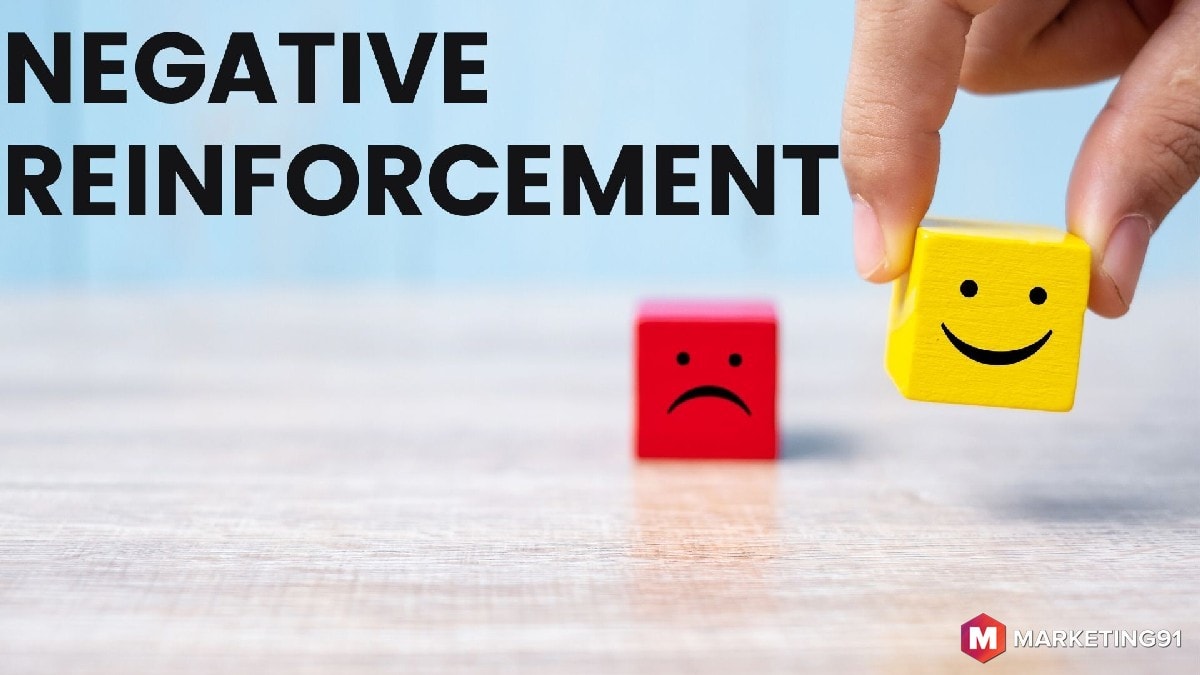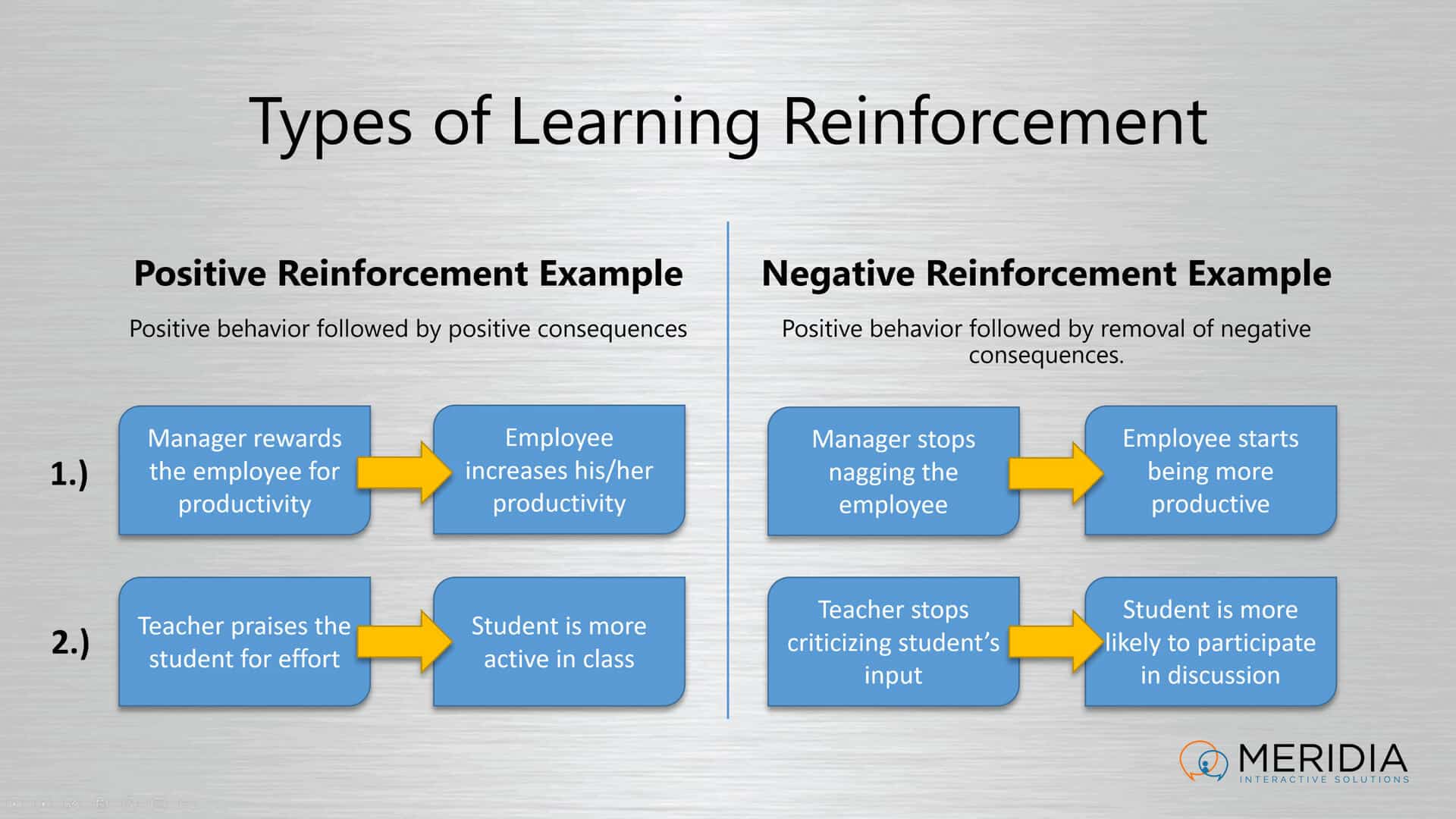
- What Is Negative Reinforcement In The Classroom
- Positive Vs Negative Reinforcement In The Classroom
- Negative Reinforcement In Classrooms What We're Beginning To Learn
- Negative Reinforcement In The Classroom
- Negative Reinforcement In The Classroom
Somewhat hard to define, negative reinforcement is attached to a definitively negative connotation. However, that is because it is often confused with punishment or being overly critical. The goal of negative reinforcement 'allows the teacher to avoid or terminate an unpleasant situation if the behavioral goal is achieved'(Wolfgang, p21). The foundational understanding of positive and negative classroom reinforces. Finally, we discuss the implementation of alternatives that have successfully worked in the classroom, which have created healthier learning environment. The “Get-Tough” Legacy Historically in the United States, schools have been expected to be learning.
Negative reinforcement and positive reinforcement are two of those terms that originated in science, yet are thrown around casually in conversation so much that most people misuse them all the time. Most people assume that negative reinforcement is very similar to punishment, but they actually have very different meanings.
The definition is actually a bit complicated, so let's go through it step by step...
Let's start with the meaning of 'reinforcement'. According to the science of psychology, reinforcement is when a person's behavior produces a result that they consider to be agreeable. The agreeable result encourages them to repeat the same behavior over and over. There is no 'disagreeable reinforcement'.
That would just be called punishment.
Reinforcement always produces a result that is agreeable to the subject.
Now, let's define the terms 'positive' and 'negative'. To us, the term positive usually means something good, and the term negative usually means something bad.
But, in science, positive means that something is added, and negative means that something is taken away.
So, let's put the two terms together. Reinforcement is when something agreeable happens. Negative is when something is taken away.
Therefore, negative reinforcement is when a person's behavior causes something to be taken away, which produces an agreeable result. The agreeable result encourages them to repeat the same behavior over and over.
Examples of Negative Reinforcement in Action
Let's look at a real world example of negative reinforcement...
What Is Negative Reinforcement In The Classroom
Let's say your neighbors are noisy. When you try to sleep at night, they always wake you up. You start wearing earplugs at night, and now you can sleep.
Now, you wear earplugs every night.
Your behavior (putting in earplugs) causes something to be taken away (the noise from the neighbors), which produces an agreeable result (sleep). This agreeable result encourages you to repeat the same behavior over and over (wearing the earplugs every night).
Many more examples of negative reinforcement in practice can be found here.
This is where the confusion comes from, because if taking something away produces an agreeable result, then the thing that was taken away must have been bad. So, it's easy to assume that the word 'negative' is referring to the bad thing, rather than the taking away of something.

As you can see, the scientific definitions of negative and positive reinforcement, as they were conceived by behavioral scientist B.F. Skinner, are very different from their current colloquial uses.
How Negative Reinforcement is Used in the Classroom
It is very possible to use negative and positive reinforcement to encourage different behaviors in adults and children in the classroom or in an e-learning environment. Again, these terms are not synonymous with punishment and praise.
To use negative reinforcement in the classroom, identify the behavior you'd like to reinforce in your students. Listening quietly to the lesson, for example, in a traditional classroom setting.
When the students listen quietly to the lesson, reward them by canceling the homework assignment for that night. In the future, the students may listen quietly because it has previously resulted in their homework assignment being canceled.
Negative reinforcement is different then rewarding students with candy or good grades, for example, because you are removing something they don't want instead of giving them something they do want.
Using negative reinforcement, in some ways, is one of the easiest and most sustainable forms of behavioral management. With positive reinforcement or punishment, you are constantly adding positive and negative stimuli.
Negative reinforcement is all about subtraction.
You start with a baseline that is disagreeable to the student, but with the intention of moving towards an agreeable situation as they earn it.
That said, you may not want to go around telling people how much you love negative reinforcement. At least not without explaining which definition you're talking about.
There’s a reason why we act how we act. Our behaviors make sense and have functions, even if that isn’t always clear.
If a child is behaving in an unfavorable way, it’s because the behavior is meeting a specific need.
Learning about the four functions of behavior is important for teaching children and becoming a better educator. Keep reading to understand what the functions are so that you can learn how to modify the behavior in the future.
Understanding That Behaviors Occur for a Reason
Before we break down the 4 functions of behavior, it’s important to have the context behind it. ABA or Applied Behavior Analysts often use this concept to identify why a person is continuing to engage in a behavior, believing that behavior typically serves a function or purpose for the individual.
This is basically referring to the idea that there’s a reason why a behavior is occurring. It can be difficult to understand why an adult or child is engaging in a behavior, especially if it’s something negative like aggression or self-injury, but the underlying function will help explain it.
Behavior can also serve more than a single function at one time. A child might act out in order to gain attention from a teacher, and out of frustration for being required to complete an academic task.
Understanding the function also helps to guide a treatment plan if problematic behaviors are occurring. So what are the ABA four functions of behavior?
1. Social Attention
The first function is social attention or attention-seeking. The goal of attention-seeking behavior is to gain the attention of a nearby adult or another child.
For example, a child might whine in order to get attention from their parents. They may also engage in certain behaviors to get others to laugh with them or play with them, or they may just want people to look at them.
They may not always be seeking positive attention. The child might be behaving in a certain way to elicit anger or scolding from their parent or teacher.
2. Escape
Positive Vs Negative Reinforcement In The Classroom
Not all behaviors seek to gain something like attention-seeking. When a child engages in an escape behavior, he or she is trying to get away from something or avoid it altogether.
For example, in a home setting, a child might run away if they don’t want to take a bath. If a child is misbehaving in the classroom by putting their head down on the desk when presented with an assignment, they are attempting to escape the work.
It’s possible that escape behaviors are a result of lacking motivation for performing the task or that the task is too difficult. When trying to understand why a child might be engaging in escape behaviors, it can be helpful to take a step back and provide easier tasks to help them slowly understand the work.
3. Seeking Access to Tangibles or Activities
The third function of a behavior is seeking access to tangibles or activities. This is referring to the concept that some children engage in behavior so that they can gain access to a desired item or activity.
This behavior is the opposite of escape since the child is doing something in order to get what he or she wants.
For example, the child might scream or cry at a store so that the adult will buy them the toy they want. It can also be seen more positively if a child is getting dressed or doing their chores quickly so that they can go play.
4. Sensory Stimulation
This behavior is referring to stimulating the senses, or self-stimulating. This behavior functions to give the child some kind of internal sensation that pleases them or removes an internal sensation they don’t like.
A simple example of this is scratching. A child might scratch their skin due to bug bites or sunburn to relieve the feeling of itching.
This will certainly vary depending on the child. One child might enjoy and feel sensory stimulation from fast sports, but another child might rock back and forth to de-stimulate his or her senses.
How Function and Reinforcement Work
We’ve already reviewed that behavior occurs because of the function that it’s serving the child. It’s important to also understand how these behaviors serve to reinforce or maintain an outcome. Behavior can be understood in terms of both function and reinforcement.
In general, behaviors serve two functions. A behavior is an attempt to get something or an attempt to get away from something. So when a behavior works to get something for the child, it’s called positive reinforcement.
The opposite is also true. If a behavior works to get the child away from something or have something be taken away, it’s referred to as negative reinforcement.
Negative Reinforcement In Classrooms What We're Beginning To Learn
Understanding Positive and Negative Reinforcement
It’s helpful to break down positive and negative reinforcement further to better understand them. Both types of reinforcement can be understood in terms of social and automatic reinforcement.
Social positive reinforcement happens when behavior gets the child something through the actions of another. For example, a child might ask her mother for a cup of juice. The action is required by the mother for the positive reinforcement of the juice.
Automatic positive reinforcement happens without needing anyone else. So the child is able to get what they want on their own. For example, a child is pouring her own cup of juice.
The opposite of both of these concepts are social negative reinforcement and automatic negative reinforcement. The goal of social negative reinforcement is to get the child away from something or have something be taken away through the actions of someone else. So for example, a child might ask for their mother to take the fruit off their plate.
Similarly, the goal of automatic negative reinforcement is to get something away from the child through their own actions. The child might push vegetables or fruit off their plate if they don’t desire them.
Positive and negative reinforcement further explain the functions of behavior.
The Four Functions of Behavior Help to Educators Understand Children
A behavior occurs for a reason. Learning the four functions of behavior will help you to understand a child’s motivation behind actions or behaviors within the classroom.

Negative Reinforcement In The Classroom
Plus, grasping both positive and negative reinforcement will paint the full picture of why a child is acting a certain way.
Click here to register for our webinar and learn more about managing behavior.